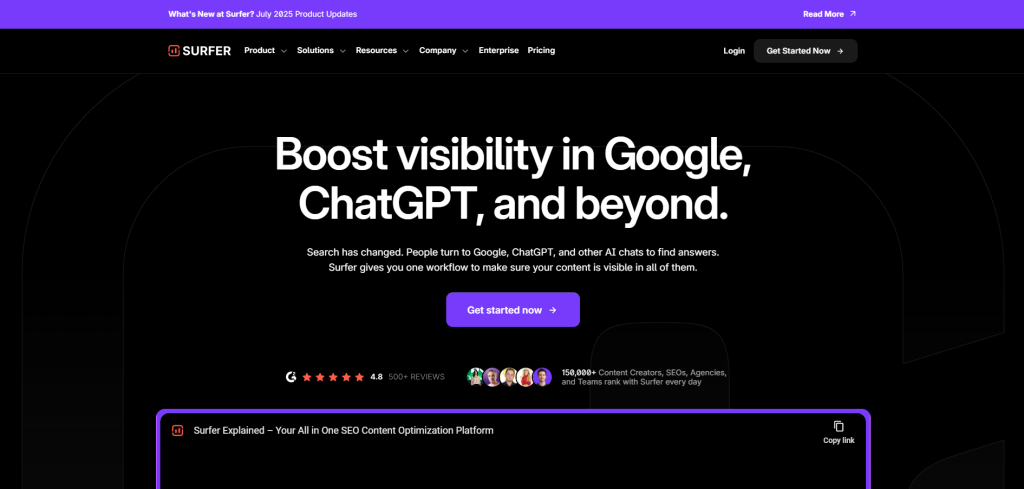Ever felt like you’re throwing content at the wall and hoping something sticks? Yeah, I’ve been there too. A topical map in SEO is your strategic roadmap out of that chaos, and honestly, it’s one of those game-changing approaches that makes you wonder why you didn’t start sooner. Think of it as organizing content around core topics and their related subtopics to establish real authority in your niche. It’s like creating a visual web that shows how all your content pieces connect, helping search engines (and more importantly, your audience) understand that you actually know what you’re talking about in specific areas.
Understanding topical maps in SEO
Here’s the thing about topical maps, they represent a massive shift from the old-school SEO playbook. Remember when we used to obsess over individual keywords like they were precious gems? Those days are pretty much over. Today’s search landscape is all about context, semantics, and actually understanding what users are really looking for.
Picture this: your content universe laid out like a mind map, with everything connected in meaningful ways. That’s essentially what topical maps do. They show how different pieces of your content relate to each other within your area of expertise. And here’s why this matters so much, Google has gotten scary good at understanding the meaning behind searches, not just matching keywords.

Since Google’s Hummingbird update back in 2013, followed by BERT and the more recent MUM update, search engines have become incredibly sophisticated at recognizing topical authority. What does this mean for you? It means Google can tell when a website comprehensively covers a subject versus just scratching the surface. Topical maps are basically our strategic response to this evolution, helping us build structured approaches that demonstrate real expertise across entire subjects, not just random keywords.
This shift toward comprehensive coverage is exactly what Google wants to reward. Makes sense, right? They want to send users to sites that can actually answer their questions thoroughly.
Complete Guide to Topical Mapping Tools: Reviews and Comparisons
Alright, let’s talk tools. And trust me, choosing the right topical mapping tool can make or break your content strategy. I’ve tested most of these platforms myself, and the differences are pretty significant depending on what you’re trying to achieve and how much you’re willing to invest.
Top Topical Mapping Tools: Detailed Reviews
1. MarketMuse AI
Best for: Enterprise teams and agencies that need serious content planning firepower
Pricing: Starting at €149/month (Standard), €399/month (Team), Custom pricing for Enterprise

Key Features:
- AI-powered content planning and topic clustering
- Competitive gap analysis and content scoring
- Automated topic discovery with semantic analysis
- Integration with popular CMS platforms
- Team collaboration features
Pros: The topic suggestions are incredibly accurate, and the competitive analysis features are top-notch. If you’re managing large-scale content operations, this tool is a powerhouse.
Cons: I’ll be honest, there’s a steep learning curve here. It’s also pretty expensive for smaller operations, and if you’re just starting out, it might feel overwhelming.
Best Use Case: Large marketing teams juggling multiple websites with complex content strategies
2. Surfer SEO
Best for: Mid-size businesses and agencies focused on content optimization
Pricing: €89/month (Basic), €179/month (Pro), €299/month (Business)

Key Features:
- Content Editor with real-time optimization suggestions
- Keyword clustering and topic grouping
- SERP analysis and content gap identification
- Outline Builder for structured content planning
- Chrome extension for seamless workflow
Pros: The interface is really user-friendly, and the content optimization features are excellent. You get solid value for your money here.
Cons: The advanced topical mapping features are somewhat limited. It’s more focused on optimizing individual pieces rather than comprehensive topic planning.
Best Use Case: Content creators who want both topical planning and real-time optimization guidance in one package
3. Frase AI
Best for: Content teams that need research automation and topic discovery
Pricing: €14.99/month (Solo), €44.99/month (Basic), €114.99/month (Team)

Key Features:
- Automated content research and topic clustering
- Question-based topic discovery
- Content brief generation
- Competitor content analysis
- AI-powered content generation
Pros: The pricing is really accessible, and the research automation saves tons of time. I love the question-based approach to topic discovery.
Cons: The visual mapping capabilities are pretty limited compared to premium tools, and you won’t get as many advanced features.
Best Use Case: Small to medium businesses looking for affordable research automation without breaking the bank
4. SEMrush Topic Research
Best for: Comprehensive digital marketing teams already using the SEMrush ecosystem
Pricing: €119.95/month (Pro), €229.95/month (Guru), €449.95/month (Business)
Key Features:
- Topic clustering with search volume data
- Content gap analysis
- Trending topics identification
- Integration with SEMrush’s full suite
- Social media content suggestions
Pros: The data is incredibly comprehensive, and if you’re already using SEMrush, the integration is seamless. The trend analysis is particularly strong.
Cons: It’s pretty expensive, especially if you only need topical mapping. The complexity might be overkill for smaller operations.
Best Use Case: Agencies and enterprises already invested in SEMrush for comprehensive SEO management
5. WP SEO AI
Best for: WordPress users who want integrated content strategy and SEO optimization
Pricing: €420/month (Starter), €680/month (Professional), €990/month (Agency)

Key Features:
- Built-in topical mapping during onboarding
- WordPress-native content optimization
- AI-powered content suggestions
- Automated internal linking recommendations
- Performance tracking and analytics
Pros: The WordPress integration is seamless, and the pricing is reasonable for what you get. It’s particularly beginner-friendly.
Cons: You’re limited to WordPress sites, and the advanced features aren’t as robust as specialized tools.
Best Use Case: WordPress site owners who want integrated SEO and content strategy without juggling multiple tools
6. Clearscope
Best for: Content optimization with a strong focus on semantic analysis
Pricing: €170/month (Essentials), €350/month (Business), Custom pricing for Enterprise
Key Features:
- Advanced semantic keyword analysis
- Content grading and optimization
- Topic clustering based on search intent
- Google Docs integration
- Team collaboration features
Pros: The semantic analysis is excellent, the interface is clean and intuitive, and the optimization features are really strong.
Cons: It’s expensive, the topical mapping visualization is limited, and it’s mainly focused on optimization rather than comprehensive planning.
Best Use Case: Content teams that prioritize semantic optimization and content quality above all else
Tool Comparison Matrix
| Tool | Ease of Use | Accuracy | Integration | Scalability | Price Range | Best For |
|---|---|---|---|---|---|---|
| MarketMuse AI | ⭐⭐⭐ | ⭐⭐⭐⭐⭐ | ⭐⭐⭐⭐ | ⭐⭐⭐⭐⭐ | €€€ | Enterprise |
| Surfer SEO | ⭐⭐⭐⭐ | ⭐⭐⭐⭐ | ⭐⭐⭐ | ⭐⭐⭐⭐ | €€ | Mid-size teams |
| Frase AI | ⭐⭐⭐⭐⭐ | ⭐⭐⭐⭐ | ⭐⭐⭐ | ⭐⭐⭐ | € | Small businesses |
| SEMrush | ⭐⭐⭐ | ⭐⭐⭐⭐ | ⭐⭐⭐⭐⭐ | ⭐⭐⭐⭐⭐ | €€€ | Full-service agencies |
| WP SEO AI | ⭐⭐⭐⭐⭐ | ⭐⭐⭐⭐ | ⭐⭐⭐⭐⭐ | ⭐⭐⭐ | € | WordPress users |
| Clearscope | ⭐⭐⭐⭐ | ⭐⭐⭐⭐⭐ | ⭐⭐⭐ | ⭐⭐⭐⭐ | €€€ | Content optimization |
Tool Selection Framework
Look, choosing the right tool isn’t just about features and pricing. It’s about finding something that actually fits your workflow and grows with your needs. Here’s how I’d approach the decision:
For Agencies and Large Teams:
- Budget: €300+/month → MarketMuse AI or SEMrush (you get comprehensive features and solid team collaboration)
- Budget: €100-300/month → Surfer SEO or Clearscope (great balance of features without breaking the bank)
- Multiple client management → SEMrush or MarketMuse (white-label options and scalability are crucial here)
For In-House Marketing Teams:
- WordPress-focused → WP SEO AI (seamless integration and cost-effective)
- Content optimization priority → Surfer SEO or Clearscope (strong optimization features)
- Research automation needs → Frase AI or MarketMuse (automated topic discovery saves so much time)
For Freelancers and Small Businesses:
- Budget under €50/month → Frase AI or WP SEO AI (affordable with essential features)
- Beginner-friendly needed → WP SEO AI or Frase AI (intuitive interfaces that won’t overwhelm you)
- Growth-focused → Surfer SEO (scalable pricing and comprehensive features as you expand)
Key Selection Criteria
When you’re evaluating these tools, here’s what really matters based on your specific needs:
- Accuracy of topic suggestions – How well does the tool actually identify relevant subtopics and semantic relationships? This is make-or-break.
- Integration capabilities – Does it play nice with your existing content management and analytics systems?
- Scalability – Can it handle your content volume and team size as you grow?
- User experience – Is the interface intuitive for your team’s skill level? No point in having powerful features if nobody can use them.
- Data depth – Does it provide the level of competitive and search data you actually need?
- Collaboration features – Can multiple team members work together effectively without stepping on each other’s toes?
- Reporting and analytics – Does it track performance and provide actionable insights, not just pretty charts?
Here’s something I learned the hard way: the most expensive tool isn’t always the best choice. Focus on finding the solution that actually fits your workflow, respects your budget constraints, and aligns with your strategic goals. Most tools offer free trials, so test multiple options before committing. Trust me on this one.
The investment in the right topical mapping tool pays dividends through more efficient content planning, better search rankings, and stronger authority development. Choose based on your current needs, but keep an eye on future growth and evolving requirements. Your future self will thank you.
AI-Powered Topical Mapping: Key advantages
Let me tell you, AI has completely transformed how we approach topical mapping. What used to take me hours or even days to map out manually, AI can now handle in minutes. And we’re not talking about basic keyword clustering here, we’re talking about sophisticated analysis that can identify semantic relationships you might never have considered.
Here’s what modern AI solutions bring to the table:
- Automated topic discovery – AI can analyze competitor content, search results, and industry publications to identify comprehensive topic clusters automatically. It’s like having a research assistant that never sleeps.
- Semantic relationship mapping – Advanced language models understand contextual connections between topics that traditional keyword tools completely miss. This is where the magic happens.
- Scalable content planning – Generate extensive topical maps covering hundreds of related subtopics in minutes rather than weeks. Game changer for large-scale operations.
- Gap analysis automation – AI can quickly identify content gaps by comparing your existing content against comprehensive topic coverage. No more guessing what you’re missing.
- Intent-based clustering – Automatically group topics based on user search intent and content type requirements. This is crucial for modern SEO.
The platforms I’ve found most useful for AI-powered topical mapping include:
- ChatGPT and Claude – Use specific prompts to generate topic hierarchies, identify subtopics, and explore semantic relationships within your niche. The key is knowing how to prompt them effectively.
- WP SEO AI – Right from the onboarding process, you can create comprehensive topical maps for your content strategy. It’s surprisingly intuitive.
- Jasper AI – Offers content clustering features that can organize topics into logical content pillars and supporting articles.
- MarketMuse AI – Provides automated content planning with AI-driven topic suggestions and competitive gap analysis.
- Frase AI – Uses machine learning to analyze top-ranking content and suggest comprehensive topic coverage.
- Surfer SEO – Incorporates AI to identify semantic keywords and related topics for comprehensive content planning.
Want to try this yourself? Here’s a practical AI prompt that actually works:
“Create a comprehensive topical map for [your main topic]. Include: 1) 5-7 primary subtopics, 2) 3-5 secondary topics under each primary subtopic, 3) Content types needed for each topic (guides, tutorials, comparisons), 4) Semantic relationships between topics, 5) Suggested internal linking structure. Format as a hierarchical outline with explanations for each connection.”
But here’s the thing, and this is important: always validate AI suggestions against your business goals and audience needs. AI is incredible at identifying comprehensive topic coverage, but human expertise is still essential for prioritizing content based on business relevance and actual user value. Think of AI as your incredibly smart research assistant, not your replacement.
The sweet spot is combining AI efficiency with human strategic thinking. This creates the most effective approach to modern topical mapping, allowing you to build authoritative content ecosystems faster and more comprehensively than either approach could achieve alone.
What is a topical map in SEO?
Think of a topical map as your content’s family tree. It’s a visual representation that shows the complete landscape of a subject area, identifying core topics, subtopics, and how they all connect to each other. Essentially, it’s your strategic blueprint for developing content that comprehensively covers a particular subject domain, helping establish your website as the go-to authority in that space.
Picture this: your content ecosystem laid out like a mind map. At the center sits your primary topic or “pillar” content, surrounded by clusters of related subtopics that support and expand upon the main subject. These connections aren’t random, they mirror how information is naturally organized in our minds and, more importantly, how search engines understand related concepts.
Let’s say “digital marketing” is your primary topic. Your topical map would branch out to subtopics like social media marketing, content marketing, SEO, email marketing, and PPC advertising. Each of these would then connect to more specific concepts. Think “Instagram marketing” under social media or “keyword research” under SEO. See how it all connects?
The comprehensive nature of topical maps helps search engines recognize your website as an authoritative source that thoroughly addresses user needs across an entire subject area. You can learn more about content authority development and how it impacts your overall digital marketing strategy.
Why are topical maps important for SEO?
Here’s the reality: topical maps are crucial for SEO because they help you establish topical authority, which has become a major ranking factor in modern search algorithms. When your website demonstrates comprehensive coverage of a subject through interconnected content, search engines are much more likely to consider you an authoritative source worthy of higher rankings.
But why does this matter so much for your bottom line? Let me break down the strategic benefits:
- Enhanced topical authority – By covering all aspects of a subject thoroughly, you signal to search engines that your site is a valuable resource on that topic. This isn’t just theory, it’s how rankings actually work now.
- Better content organization – Topical maps provide a clear structure for your content strategy, eliminating gaps and reducing redundancy. No more wondering “what should I write about next?”
- Improved internal linking – Understanding the relationships between topics makes it so much easier to create meaningful connections between content pieces. Your site architecture becomes logical and user-friendly.
- More comprehensive user experience – Visitors can explore related topics easily, increasing engagement and time on site. Happy users mean better rankings.
- Competitive advantage – Most websites still focus on isolated keywords rather than comprehensive topic coverage. You’ll be ahead of the curve.
When you build content that addresses various aspects of your core topics, you’re not just optimizing for individual keywords. You’re creating an ecosystem that positions your site as the go-to resource in your niche. This approach aligns perfectly with Google’s mission to provide the most helpful, authoritative content to users.
I’ve seen websites that implement effective topical mapping experience improvements in rankings across numerous related search terms, not just the specific keywords they target. This happens because search engines recognize the site’s broader expertise on the subject matter. For business owners looking to enhance their digital presence, explore how AI-powered SEO solutions can help develop comprehensive content strategies that actually work.
How do topical maps differ from keyword research?
This is a question I get all the time, and honestly, understanding this difference is crucial for modern SEO success. Topical maps and keyword research represent fundamentally different approaches to content planning, though they work beautifully together when you know how to use them properly.
Keyword research is all about identifying specific search terms people use, their search volume, competition levels, and potential to drive traffic. It’s laser-focused on individual terms and phrases. Topical mapping, on the other hand, examines the broader subject landscape, identifying semantic relationships between topics and how they connect to form a comprehensive knowledge base.
| Keyword Research | Topical Mapping |
|---|---|
| Focuses on specific search terms | Focuses on subject areas and relationships |
| Prioritizes search volume and competition | Prioritizes comprehensive topic coverage |
| Targets individual content pieces | Plans interconnected content ecosystems |
| Query-focused approach | User knowledge journey-focused approach |
| Short-term traffic strategy | Long-term authority building strategy |
The key difference lies in their scope and intent. Keyword research helps you identify opportunities for individual content pieces, while topical authority analysis guides your overall content strategy, ensuring you cover subjects comprehensively.
Here’s a concrete example: keyword research might reveal that “how to optimize meta descriptions” is a valuable term to target. Topical mapping would place this within the broader context of technical SEO, connecting it to related concepts like title tags, schema markup, and URL structure. It shows how these elements fit within your complete SEO content ecosystem.
The most effective SEO strategies combine both approaches: using topical maps to develop a comprehensive content structure and keyword research to optimize individual pieces within that structure. It’s like having both the big picture and the detailed execution plan.
How do you create an effective topical map?
Creating an effective topical map doesn’t have to be overwhelming, though I’ll admit it felt that way when I first started. Here’s the systematic approach I’ve developed over the years that actually works:
- Identify your core topic – Start by selecting the primary subject area where you want to establish authority. This should align with your business focus and expertise. For example, if you’re a digital marketing agency, you might choose “content marketing” as a core topic.
- Research related subtopics – This is where the detective work begins. Expand your core topic by identifying key subtopics that naturally branch from it. Use Google’s related searches, dive into “People Also Ask” sections, browse industry forums, and analyze competitor content to discover what aspects of your topic users are genuinely interested in.
- Analyze search intent – For each subtopic, dig deeper to understand what users actually want to know. Examine the types of content currently ranking and categorize them into informational, navigational, commercial, or transactional intent. This step is crucial.
- Create hierarchical relationships – Organize your topics into primary, secondary, and tertiary levels, establishing clear relationships between them. This forms the backbone of your topical map structure and guides your content creation.
- Map content gaps – Audit your existing content against your topical map to identify areas where you’re missing coverage. These gaps represent golden opportunities for new content that can strengthen your authority.
- Prioritize content creation – Based on factors like search volume, competition, business relevance, and gap significance, create a content development roadmap. Not all topics are created equal.
- Plan internal linking structure – Determine how content pieces will link to each other to reinforce topic relationships and guide users through your content ecosystem. This is where the magic happens.
Here’s something important to remember: topical maps aren’t set-it-and-forget-it documents. They should evolve as search trends change, your business focuses shift, and you gather performance data. Regular reviews and updates ensure your topical map continues to support your SEO goals effectively.
The most successful topical maps balance breadth (covering many related subtopics) with depth (providing thorough coverage of each subtopic). This comprehensive approach is what truly builds topical authority in the eyes of both users and search engines. It’s not about being everything to everyone, it’s about being the definitive resource in your chosen area.
What tools can help with creating topical maps?
Creating comprehensive topical maps becomes so much easier with the right toolkit. I’ve experimented with dozens of tools over the years, and these are the ones that actually make a difference in your workflow:
For effective topical mapping, you’ll want to consider these types of tools:
- Topic research tools – Platforms like SEMrush Topic Research, BuzzSumo, and AlsoAsked.com help identify related subtopics and questions users are asking about your main topic. These are goldmines for content ideas.
- Semantic analysis tools – Tools like Clearscope, MarketMuse, and Frase analyze top-ranking content to identify semantically related terms and concepts that should be included in your coverage. This is where you discover connections you might have missed.
- Mind mapping software – Visual tools like MindMeister, XMind, or even Google Drawings allow you to create visual representations of your topical map with hierarchical relationships. Sometimes you need to see the big picture.
- Content audit tools – Platforms like Screaming Frog or Ahrefs can help you inventory existing content to identify gaps in your topical coverage. Know what you have before you plan what you need.
- Search Console and Analytics – Google’s own tools provide insights into how users are finding and interacting with your content, helping refine your topical strategy based on real data.
- AI content assistants – Advanced AI tools can analyze competitive content and suggest topics that should be covered to build comprehensive authority. The future is here, and it’s pretty impressive.
When selecting tools for topical mapping, focus on those that provide insights into semantic relationships rather than just keyword metrics. The goal is to understand how topics connect in a way that mirrors how search engines process information.
Many digital marketing professionals, myself included, combine multiple tools to create robust topical maps. For instance, you might use SEMrush to identify initial topic clusters, AlsoAsked to expand on related questions, and MindMeister to visually organize the relationships between topics. It’s like having a complete toolkit rather than just a single hammer.
Key takeaways: Implementing topical maps in your SEO strategy
Implementing topical maps effectively requires a fundamental shift in how you approach content creation and SEO. Instead of chasing individual keywords like we used to do, you’re building interconnected content ecosystems that demonstrate comprehensive expertise in your field. It’s honestly one of the most rewarding strategic shifts you can make.
Here are the essential takeaways for successfully incorporating topical maps into your SEO strategy:
- Think holistically about topics – Move beyond keyword-by-keyword planning to consider entire subject areas and how different concepts relate to each other. This mindset shift is everything.
- Prioritize user journeys – Structure your topical maps to reflect how users naturally explore a subject, addressing questions they might have at each stage of their learning process. Put yourself in their shoes.
- Build pillar content – Create comprehensive resources around your core topics that can serve as anchors for your topical clusters. These become your authority foundations.
- Connect content meaningfully – Use strategic internal linking to establish relationships between content pieces that reinforce your topical authority. Every link should have a purpose.
- Measure topical authority – Track rankings across topic clusters rather than just individual keywords to gauge your growing authority in specific areas. The bigger picture matters more.
- Update continuously – Regularly refresh your topical maps as subject areas evolve, new questions emerge, and your business focus develops. Stay current, stay relevant.
Remember, building topical authority is definitely a marathon, not a sprint. It requires consistent effort to develop comprehensive coverage across your chosen subject areas. But here’s the thing: the long-term SEO benefits of being recognized as an authoritative source in your niche make this strategic approach absolutely worth the investment.
For business owners looking to stay competitive in today’s digital landscape, topical mapping represents a forward-thinking approach to content development that aligns perfectly with how modern search engines evaluate and rank content. It’s not just about keeping up, it’s about getting ahead and staying there.






